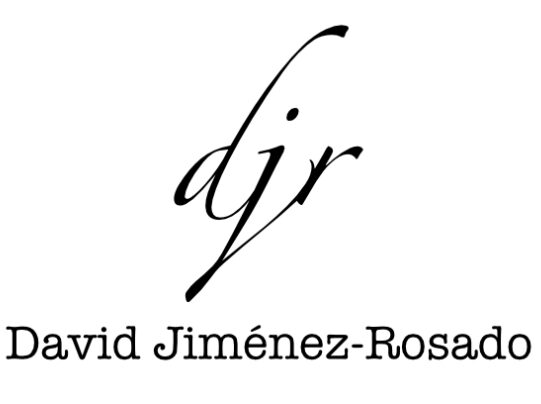
When Laura a Spanish-speaking parent, walked into her son’s Title I school, she carried more than just her concerns. She brought her lived experiences, hopes for her son’s success, and a silent language barrier. That day, a teacher greeted her in Spanish, instantly creating a bridge of trust. This seemingly small interaction was the first thread of social capital—the relationships and networks that foster trust, cooperation, and shared purpose.
In schools, social capital fuels connections between teachers, students, parents, and the broader community. It enhances collaboration, bridges equity gaps, and supports students’ success, particularly in marginalized communities. Yet, as scholars like Bourdieu (1986), Coleman (1988), and Putnam et al.(2024) have demonstrated, social capital is not uniformly distributed. Systemic barriers, such as cultural inequities, economic divides, and digital exclusion, often hinder its potential.
This article examines the theoretical foundations of social capital, its role in education, barriers to its development, and strategies for fostering inclusive networks. It concludes with a discussion of policy implications and critiques of social capital theory, providing a comprehensive understanding of why it matters in education.
Theoretical Foundations of Social Capital

Social capital is a multi-dimensional concept rooted in sociology and applied across various disciplines. Its relevance to education is best understood through the contributions of Pierre Bourdieu, James Coleman, and Robert Putnam, along with critical analyses such as those by Tzanakis (2013).
Bourdieu’s Perspective on Social Capital
Pierre Bourdieu (2018) defines social capital as the resources embedded in networks of relationships that individuals use to maintain or improve their social status. He emphasizes that social capital works in conjunction with economic and cultural capital to reinforce societal hierarchies. Families with privileged networks often access better schools, after-school programs, and college counseling—advantages accumulating over generations. Roaldsnes (2024) expands on this idea, illustrating how families with robust social networks expose children to enriching activities like music, art, and literature. Conversely, families without such networks often experience “social exclusion,” perpetuating educational disparities. Bourdieu’s perspective challenges schools to act as bridging agents, intentionally connecting marginalized families to resources they might otherwise lack.
Coleman’s Functionalist Approach
James Coleman (1988) views social capital as a collective resource that enhances community cooperation and shared goals. He identifies three critical components:
- Obligations and Expectations: Trust within a network creates reciprocal obligations, fostering collective support (Coleman, 1988, p. S102).
- Information Channels: Social networks reduce the cost of obtaining information and enable informed decision-making (Coleman, 1988, p. S104).
- Norms and Sanctions: Shared norms constrain negative behaviors and promote group success, such as academic achievement (Coleman, 1988, p. S105).
Coleman’s concept of intergenerational closure demonstrates how strong ties between families and schools enhance student success. For example, Catholic schools with close-knit family-school networks had significantly lower dropout rates than public schools (Coleman, 1988, p. S115). However, critics like Tzanakis (2013) argue that Coleman’s work overlooks how power dynamics within networks may limit access to social capital for marginalized groups.
Putnam’s Bonding and Bridging Capital
Putnam et al. (1994) introduces two forms of social capital:
- Bonding Social Capital: Strengthens connections within similar groups, such as teacher teams or cultural parent groups.
- Bridging Social Capital: Facilitates cooperation across diverse groups, connecting people from different socioeconomic, linguistic, or cultural backgrounds.
Putnam’s framework emphasizes the role of schools as bridging institutions, fostering partnerships between families, educators, and community organizations to create inclusive networks. However, Tzanakis (2013) critiques bonding social capital for sometimes reinforcing exclusivity, which can limit opportunities for outsiders.
Claridge’s Multidimensional Framework
Claridge (2018) categorizes social capital into three dimensions:
- Structural Social Capital: Formal systems like parent-teacher organizations and Professional Learning Communities (PLCs).
- Cognitive Social Capital: Shared values, trust, and collective goals.
- Relational Social Capital: Informal trust-based relationships that encourage reciprocity and collaboration.
These dimensions offer a practical lens for analyzing how social capital operates in education.
The Role of Social Capital in Education

1. Enhancing Student Outcomes
Social capital influences student achievement by fostering trust, shared norms, and resource access. Coleman (1988) highlights the role of strong networks between families and schools in improving academic performance. Roaldsnes (2024) adds that middle-class families often leverage intergenerational social capital to expose children to enriching experiences.
Schools can bridge gaps for underserved families by:
- Establishing mentoring programs or partnerships with community organizations.
- Offering family literacy workshops to strengthen home-school connections.
2. Promoting Teacher Collaboration
Teacher collaboration is another form of social capital that drives professional growth and instructional improvement. Widén-Wulff and Ginman (2004) argue that trust among educators enhances knowledge sharing and problem-solving.
Professional Learning Communities (PLCs) are a tangible example of structured social capital, where teachers analyze data, share strategies, and build collective efficacy. Olaniyi et al. (2024) highlight how digital tools like Slack can amplify collaboration. However, schools must address challenges like digital inequities to ensure equitable participation.
3. Fostering Parental Engagement
Parental engagement represents a cornerstone of relational social capital. Coleman (1988) emphasizes that trust between families and schools enhances student success. However, marginalized families often face barriers, including language inequities and cultural disconnects.
To foster parental engagement, schools can:
- Offer multilingual resources and interpretation services.
- Create advisory boards that give parents a voice in decision-making.
- Build trust through consistent, culturally responsive communication.
Challenges and Critiques of Social Capital

Despite its benefits, social capital presents challenges:
- Exclusionary Dynamics: Tzanakis (2013) critiques bonding social capital for sometimes reinforcing group boundaries and excluding outsiders.
- Public Goods Dilemma: Coleman (1988) notes that social capital functions as a public good, benefiting communities while requiring collective investment.
- Digital Inequities: Olaniyi et al. (2024) emphasize the digital divide that limits access to collaborative tools for teachers and families.
Policy Implications
To address these challenges, schools must adopt systemic solutions:
- Culturally Responsive Leadership: Train leaders to engage diverse families inclusively.
- Strengthening Teacher Collaboration: Institutionalize PLCs and ensure equitable access to digital tools.
- Inclusive Parental Engagement: Develop multilingual workshops and advisory boards.
Community Partnerships: Partner with local organizations to provide mentoring, after-school programs, and family support services.
Conclusion
Social capital is a vital resource for fostering trust, collaboration, and shared norms in education. As theorized by Bourdieu (1986) and Coleman (1988), social capital influences student outcomes, teacher growth, and family engagement. However, systemic barriers such as socioeconomic inequities and digital exclusion require intentional strategies to ensure inclusivity.
By adopting culturally responsive practices, strengthening teacher networks, and fostering parental engagement, schools can transform into hubs of opportunity where all stakeholders—students, teachers, and families—thrive.
References
Beausaert, S., Froehlich, D. E., Riley, P., & Gallant, A. (2023). What about school principals’ well-being? The role of social capital. Educational Management Administration & Leadership, 51(2), 405-421.
Bourdieu, P. (1986). The forms of capital. In The Sociology of Economic Life (pp. 78-92). Routledge.
Claridge, T. (2018). Dimensions of social capital-structural, cognitive, and relational. Social Capital Research, 1, 1-4.
Coleman, J. S. (1988). Social capital in the creation of human capital. American journal of sociology, 94, S95-S120.
Olaniyi, O. O., Ugonnia, J. C., Olaniyi, F. G., Arigbabu, A. T., & Adigwe, C. S. (2024). Digital collaborative tools, strategic communication, and social capital: Unveiling the impact of digital transformation on organizational dynamics. Asian Journal of Research in Computer Science, 17(5), 140-156.
Putnam, R. D., Nanetti, R. Y., & Leonardi, R. (1994). Making democracy work: Civic traditions in modern Italy.
Roaldsnes, A. (2024). Social capital and the intergenerational transmission of cultural capital: How parents’ social networks influence children’s accumulation of cultural capital. Poetics, 102, 101873.
Tzanakis, M. (2013). Social capital in Bourdieu’s, Coleman’s and Putnam’s theory: empirical evidence and emergent measurement issues. Educate~, 13(2), 2-23.
Widén-Wulff, G., & Ginman, M. (2004). Explaining knowledge sharing in organizations through the dimensions of social capital. Journal of Information Science, 30(5), 448-458.
